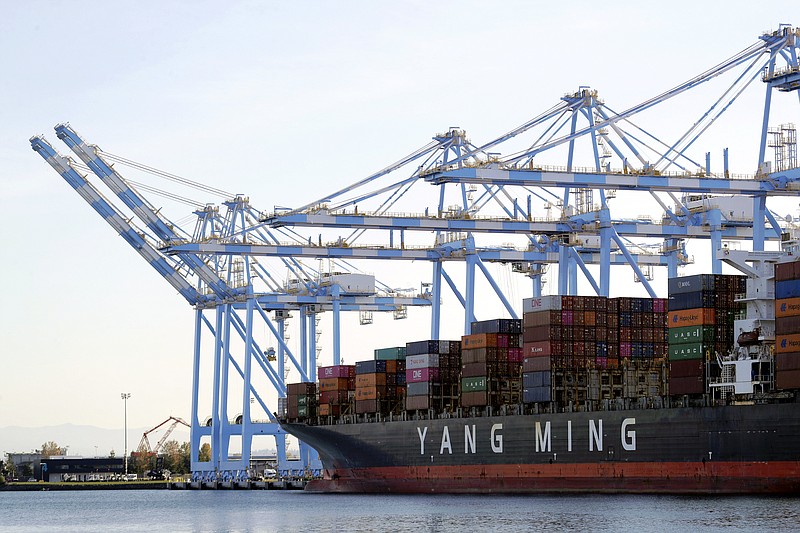WASHINGTON -- The U.S. trade deficit widened in October as the value of imports climbed to just below pre-pandemic levels, while travel restrictions and consumer wariness continued to depress services exports.
The overall gap widened 1.7% to $63.1 billion as the politically sensitive gap in the trade of goods with China and Mexico also grew.
The gap between the goods and services the United States sold and what it bought abroad rose from $62.1 billion in September, the Commerce Department reported Friday. Exports rose 2.2% to $182 billion, led by sales of aircraft engines. Imports increased 2.1% to $245.1 billion on an uptick in shipments of auto parts.
The deficit in the trade of goods with China rose 9% to $26.5 billion and the gap with Mexico rose 10% to $11.8 billion.
So far this year, the overall gap in the trade of goods and services with the rest of the world has risen to $536.7 billion, up 9.5% from January-October 2019.
President Donald Trump, who vowed to reduce the trade deficit, has imposed tariffs on foreign steel, aluminum and $360 billion worth of Chinese products.
The coronavirus, however, has upended trade in services such as education and travel in which the United States runs persistent surpluses. U.S. services exports are down nearly 20% this year, and America's trade surplus in services dropped in October to $18.3 billion, the lowest since August 2012.
The U.S. ran an October deficit of $81.4 billion in the trade of goods such as autos and appliances.
While Trump's approach has resulted in trade wars with No. 1 trading partner China, President-elect Joe Biden has indicated a more global approach toward Beijing. That said, Biden told The New York Times this week that he would keep the phase-one trade deal with the Asian nation in place while he reviews U.S. policy and consults with key allies.
Information for this article was contributed by Eric Martin of Bloomberg News.

